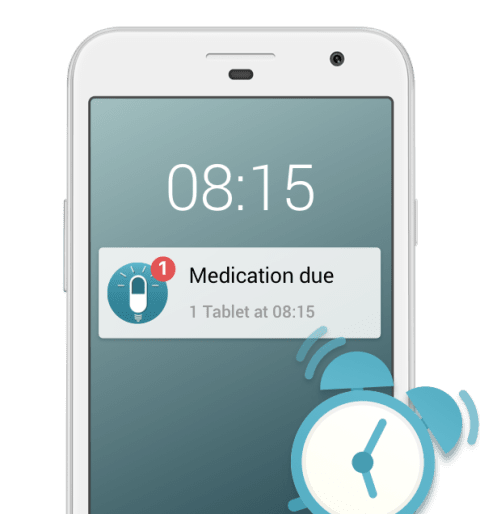Before we delve into the somewhat uncharted territory of the schizoaffective disorder, let us begin by clarifying two of the most commonly confused mental health issues: bipolar disorder and schizophrenia disorder. The names of these two disorders are frequently used interchangeably and not many realize how starkly different these disorders actually are. Hence, we will begin by breaking down their characteristics and whether they are related to schizoaffective disorder.
Bipolar Disorder
If you ever experience difficulty in remembering the definition of bipolar disorder, all you have to do is to dissect the word. From a literal standpoint, “bipolar” means two poles and this represents the two opposite ends of the disorder: mania and depression. Accordingly, bipolar disorder is a condition that results in extreme moods; one will experience both emotional highs (mania or hypomania) and lows (depression), to the extent that it might inhibit you from functioning on a daily basis.
During manic episodes, symptoms include restlessness, being overly talkative, recklessness, and a euphoric mood. The difference between mania and hypomania is that the former is more intense and debilitating; it may even cause one to dissociate from reality (aka psychosis). During depressive periods, symptoms include being lethargic, sadness, feelings of insignificance, and insomnia.
Bipolar disorder can also be further categorized into different types:
1. Bipolar I Disorder
A manic episode will occur at least once, and its intensity could be so great that medical care is required. Depending on the individual, depressive episodes may follow these manic episodes.
2. Bipolar II Disorder
The main difference between bipolar I and bipolar II is that bipolar II’s manic episodes are considerably less severe and are classified as hypomanic instead. There will be at least one hypomanic episode and a major depressive episode that lasts for at least two weeks. Due to the relatively mild nature of bipolar II’s hypomanic episodes, bipolar II can sometimes be misdiagnosed as “regular” depression. However, the downside to this disorder is that the major depressive episodes might span for longer periods, causing extensive impairment.
3. Cyclothymic Disorder
This disorder consists of several occasions of hypomania symptoms and depressive symptoms. The depressive periods are considerably less severe than major depression and the fluctuation of symptoms usually lasts for at least two years. Should a child or teenager develop this disorder, the symptoms would usually last for about a year.
4. Other Types
This refers to external factors that have induced bipolar or related disorders, such as drugs, alcohol or medical conditions like Cushing’s disease.
Schizophrenia Disorder
The term “schizophrenia” actually translates into the splitting of the mind. However, in this case, we cannot take the word literally as schizophrenia does not consist of split personality or multiple personalities, contrary to what most people think. While bipolar disorder is classified as a mood affective disorder, the schizophrenia disorder is categorized as a delusional disorder where one is unable to distinguish between realistic and imaginary experiences.
The symptoms in schizophrenia can be divided into two types: positive symptoms and negative symptoms.
Positive symptoms refer to mental disturbances that “add” to a person’s personality and are also known as psychotic symptoms:
1. Delusions – These refer to false ideas such as delusions of grandeur and delusions of persecution. For example, one might believe that they are constantly being monitored or watched.
2. Hallucinations – The five senses could be falsely stimulated where one might believe that they can see, feel, taste, hear, or smell something that does not exist. Hearing voices is the most common.
3. Impaired Cognitive Function – One might experience trouble concentrating or remembering information. This could also come in the form of declining educational performance. They may also change topics erratically and invent their own words and sounds which does not make sense.
4. Disorganized behavior – Routine behaviors such as hygiene care would be disrupted. A person with schizophrenia may also behave irrationally and impulsively and may seem stressed or anxious.
Negative symptoms describe attributes that have been “lost”:
1. Lack of Motivation (Avolition) – When a person loses their drive to the extent that even day to day tasks such as cleaning are overlooked.
2. Lack of Emotions (Apathy) – One may lack the appropriate response to happy or sad occasions.
3. Social Withdrawal – Usually when someone with schizophrenia withdraws socially, it is because they think that somebody is out to harm them.
4. Denial of illness – Many patients deem their hallucinations and delusions are real, which results in them believing that they are healthy. Some may even perceive the medication as poison.
Other posts you may be interested in on the MyTherapy blog:
- Bipolar Disorder Myths and Facts: 6 Misconceptions That Need Debunking
- Top 10 Bipolar Disorder Blogs – 2019 Edition
Schizoaffective Disorder
The symptoms of this disorder consist of both schizophrenia symptoms and bipolar systems. There are two types of schizoaffective disorder. One of them is known as the bipolar type, where an individual will experience episodes of mania and depression. The other is known as the depressive type, where one will only go through major depressive episodes. Both types include schizophrenic symptoms such as hallucinations or delusions.
One of the key differences between schizoaffective and schizophrenia is that psychotic symptoms for the former tend to be reoccurring whereas, for the latter, these symptoms persist. Another stark difference would be that someone with schizoaffective consistently has mood disorders, whereas schizophrenia has fleeting effects on mood.
The controversy that comes with schizoaffective disorder
Due to its similarity to schizophrenia disorder, the schizoaffective disorder has only been recently categorized as a separate disorder. Hence, one can say that it is not yet an exact science.
While medical professionals recognize that schizoaffective disorder seems to be a combination of bipolar and schizophrenia disorder, the exact cause of this disorder remains unclear. Logically, one would assume that it could be a result of untreated bipolar or schizophrenia; however, that notion is erroneous. Scientists suspect that, like schizophrenia, the schizoaffective disorder could be caused by a chemical imbalance in the brain or even genes. The risk of developing schizoaffective disorder has also shown to increase should a close relative have bipolar, schizophrenia, or any other mental health condition. Other plausible contributing factors could be environmental elements, complications during infancy, birth defects, and psychoactive drugs.
Being diagnosed with schizoaffective disorder
As mentioned above, the symptoms of schizoaffective disorder may resemble those of schizophrenia or bipolar disorder. Hence, in order to ensure the right diagnosis and subsequent treatment, you will have to keep track of your mood swings and monitor to see if they persist or fleeting occurrences. Should you suspect that you may be hallucinating or having delusions simultaneously, form a close support circle who will be able to help you differentiate between what is real and what is not.
You will most probably be asked to see a mental health professional and when you do, be honest about your symptoms as well as the frequency and the duration of them. By monitoring your symptoms closely, you’ll be able to get a more accurate diagnosis.
Take a look at some of the other posts on the MyTherapy blog:



